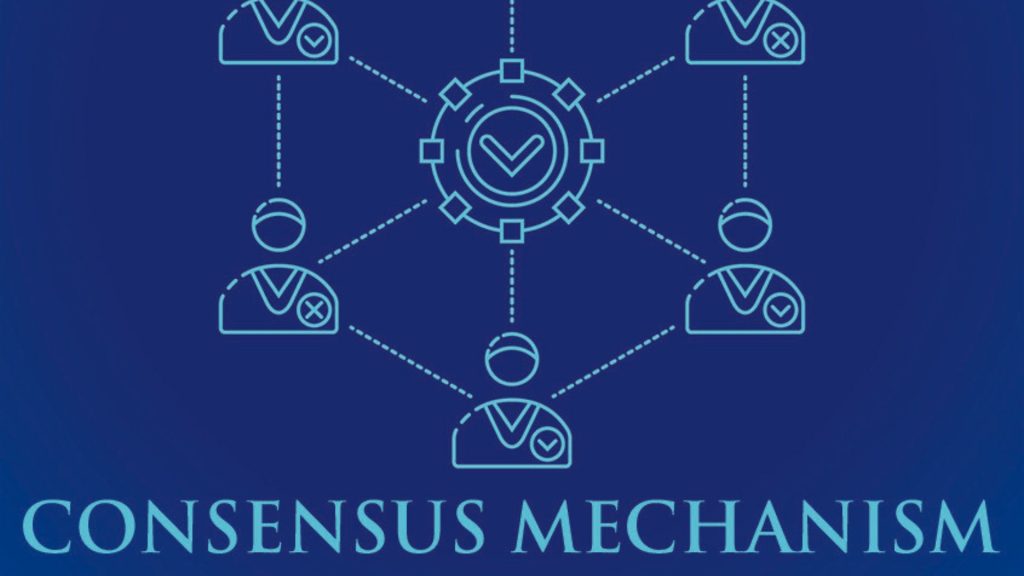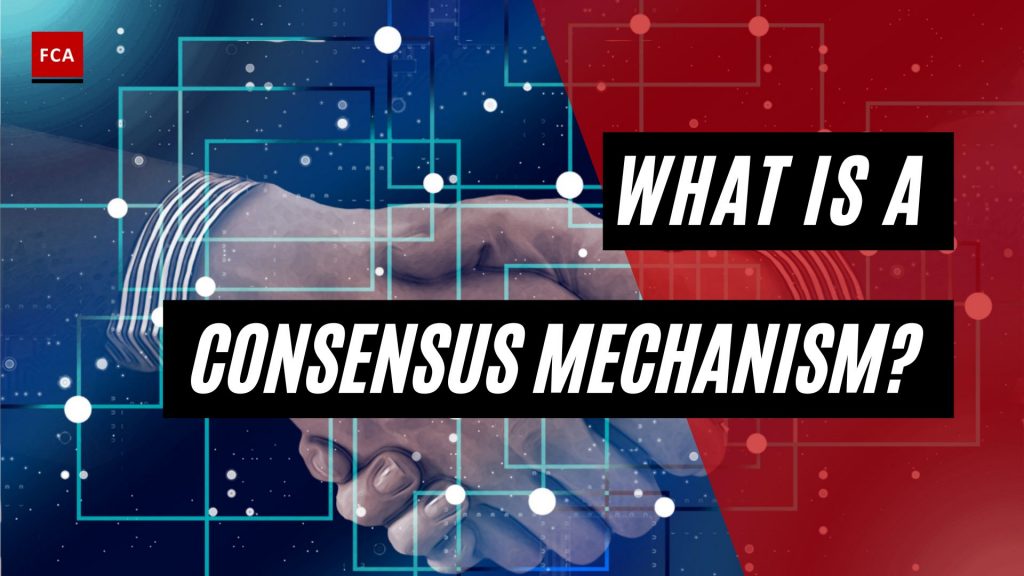What is a consensus mechanism? A consensus mechanism is a fault-tolerant mechanism used in computer and blockchain systems to achieve the necessary agreement among distributed processes or multi-agent systems, such as cryptocurrencies, on a single data value or a single state of the network. It is useful for keeping records, among other things. The consensus mechanism is a central element of the security of the Blockchain and can take many different forms. You will see that other cryptocurrencies use different consensus mechanisms.

What Is A Consensus Mechanism?
In theory, any node in a blockchain network can propose adding new data to the Blockchain. To validate whether this information addition is legitimate, the nodes must reach some sort of agreement. A “consensus mechanism” is used in this case.
A consensus mechanism is a predefined specific, cryptographic validation method that ensures a correct sequencing of transactions on the Blockchain. In the case of cryptocurrencies, such sequencing is required to address the issue of double-spending. Double-spending is when the same payment instrument or asset can be transferred more than once and would happen if transfers were not registered or controlled.
A consensus mechanism can be structured in some ways. In the context of cryptocurrencies, there are two predominant consensus mechanisms: the Proof of Work or PoW mechanism and the Proof of Stake or PoS mechanism.
Proof Of Work Mechanism Or PoW
In this kind of system, network participants have to solve so-called “cryptographic puzzles” to be allowed to add new “blocks” to the Blockchain. This puzzle-solving process is commonly referred to as “mining.” In simple terms, these cryptographic puzzles comprise all information previously recorded on the Blockchain and a new set of transactions to be added to the next “block.”
The input of each puzzle becomes more extensive over time, resulting in a more complex calculation. The PoW mechanism, therefore, requires a vast amount of computing resources, which consume a significant amount of electricity.
Suppose a network participant solves a cryptographic puzzle. In that case, it proves the work completion and rewarded with a digital form of value – or in the case of a cryptocurrency, with a newly minted coin. This reward serves as an incentive to uphold the network.
The cryptocurrency Bitcoin is based on a PoW consensus mechanism. Other examples include Litecoin, Bitcoin Cash, Monero, and others.

Proof Of Stake Mechanism Or PoS
In this kind of system, a node as a transaction validator must prove ownership of a particular asset to participate in the validation of transactions. In the case of cryptocurrencies, this would require a certain amount of coins. This act of validating transactions is called “forging” instead of “mining.” For example, in the case of cryptocurrencies, a transaction validator will have to prove his “stake” of all coins to be allowed to validate a transaction.
Depending on how many coins he holds, he will have a higher chance of being the one to validate the next block, which is in line with the assumption that he may have greater seniority within the network, earning him a more trusted position. The transaction validator is paid a fee for his validation services by the transacting parties.
Cryptocurrencies such as Neo and Ada utilize a PoS consensus mechanism.
The PoW and PoS mechanisms are far from the only consensus mechanisms currently in existence. Other examples include proof of service, proof of elapsed time, and proof of capacity. Many other consensus mechanisms are probably developed in this very second all over the world. Eventually, they will emerge and become part of a new cryptocurrency.
Final Thoughts
A central administrator has the authority to maintain and update any centralized system, such as a database containing critical information about driving licenses in a country. The task of making any updates, such as adding/deleting/updating names of people who qualified for certain licenses, is performed by a central authority, which remains solely responsible for maintaining genuine records.
Public blockchains operate on a global scale as decentralized, self-regulating systems with no central authority. They entail contributions from hundreds of thousands of participants who work on the verification and authentication of blockchain transactions as well as block mining activities.









